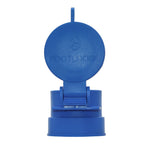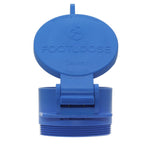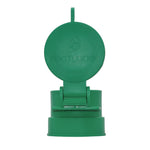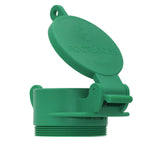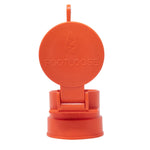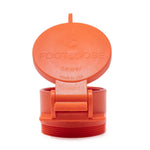You have no items in your shopping cart.
Once considered quirky and counterculture, RV travel has become a nationwide trend furthered by the COVID-19 pandemic. Data from the RV Industry Association found RV ownership has increased by over 62 percent in the last twenty years. There has been significant growth among millennial buyers, with 18- to 34-year-olds now making up 22 percent of RV owners.
An unprecedented 9.6 million Americans intend to buy an RV within the coming five years. If you count yourself among them, keep in mind that buying a motorized home or trailer is a major and expensive decision. Before taking the plunge into RV ownership, here are six things you need to know before buying a motorhome or trailer:
There are many types of RVs to choose from.
First, it’s important to know what type of RV you should buy. There are many different types of RVs on the market today, and the right one for you will depend on your budget, size needs, desired amenities, and travel goals. Before you make a buying decision, here’s a quick summary of the seven main types of RVs:
- Class A RVs - These are the largest motorized RVs available and come with spacious sleeping quarters and lounging areas, full kitchens, and high-end amenities.
- Class C RVs - Class C RVs are smaller than Class As but larger than Class Bs (kind of confusing, we know!). You can usually identify Class C vehicles by the sleeping area or storage space that juts out over the cab.
- Class B RVs - Class B RVs are the smallest of the motorized RVs. Sometimes called camper vans, Class B RVs look and drive much like—you guessed it—a van.
- Travel trailers - Travel trailers—sometimes called conventional trainers or bumper pulls—hitch to the rear bumper or frame of your everyday car or truck. They come in a range of sizes and weights—from under 4,000 to over 10,000 pounds.
- Fifth-wheel trailers - Fifth-wheel trailers, or fivers, connect to a U-shaped coupling attached to the cargo bed of a pickup truck. Kind of like Class C RVs, fifth-wheel trailers have an upper-level sleeping area that extends over the bed of a pickup truck.
- Truck campers - Truck campers—also called slide-ins or cab-overs—sit on the bed of a pickup truck, basically converting the vehicle into an RV.
- Popup trailers - Also known as folding or expandable trailers, popup trailers come with a hard base and tent-like side sections that expand to create more space when you set up camp.
To determine the best type of RV for your needs, ask yourself how much space and what kind of amenities you need to be comfortable. You should also consider how large of a vehicle you feel comfortable driving and whether you want a motorhome or towable trailer. If you decide to get a trailer, it’s also important to make sure your car or truck is able and equipped to tow the weight.
It might make sense to buy a used RV.
Like any vehicle, an RV depreciates in value over time. According to Camper Report, an RV loses an average of 21% of its value the moment you drive it off the lot. Five years is often the time when the steep rate of RV depreciation plateaus, so it often makes sense to purchase an RV that is around five years old.
You might not have guessed it, but second-hand RVs often come with fewer problems, as it can take a few years to break in an RV and work out any kinks. Just make sure you check a used vehicle’s records to ensure it was well-maintained.
You should check for these common used RV problems.

If you do go the used RV route, you should perform a thorough inspection of the interior and exterior of the vehicle for issues that could escalate over time. Here are some of the most common RV problems to keep an eye out for:
- Mold - In addition to causing health issues on its own, mold can be an indication of bigger problems. If there is mold on the inside of an RV, it’s often a sign of leaks and other plumbing issues. Always inspect a second-hand RV closely for mold, making sure to examine the walls, corners, ceilings, floors, and inside of cabinets and closets.
- Floor rotting - Make sure the floors of the RV—particularly in areas like the kitchen and bathroom—feel sturdy. If the floors give under your weight, it could be a sign of rotting underneath.
- Exterior rust, corrosion, and water damage - You should open exterior panels to examine them for rust and corrosion. Walk around the RV and check for bubbles or depression in the sides and roof, which is a sign of underlying water damage.
- Roof leaks - Check the roof for rips, tears, and worn spots, which could lead to leaks. Examine sealants and caulking to ensure nothing looks cracked or dried out.
-
Broken features and appliances - Make sure you press all the buttons to ensure everything is functioning. This includes turning on lights, the hot water heater, faucets, water pump, and engine.
If you want to be extra confident in your purchase, it might make sense to ask for a professional inspection. A professional inspection shouldn’t cost much more than a couple of hundred dollars and will pay for itself if it prevents you from driving off the lot with a lemon.
RVs can be expensive to fuel.
After the cost of actually buying an RV, the second most expensive part of RV ownership might be keeping it full of gas. RVs large and small are gas guzzlers. A small Class B camper van will get around 15 to 18 miles to the gallon, while a large Class A might get as little as 4 to 8 miles per gallon. Diesel-fueled vehicles tend to go around 20% to 35% farther per gallon than their gasoline-fueled counterparts, but diesel is often more expensive than gas.
RVs can be expensive to repair and maintain.
A regularly maintained RV can last 20 years or 200,000 miles. However, to ensure your RV has a long, healthy life, you need to perform routine maintenance by scheduling oil changes, engine cleaning, brake pad checks, and the like. If you’re in the market for a new RV, this list of the top 5 Rv Brands in the USA will help you in deciding on the brand that is perfect for you.
As a rule of thumb, you should budget a few thousand dollars for annual RV maintenance and repairs. Be prepared to book repair and maintenance well in advance—RV mechanics tend to be hard to find and booked several weeks out.
You’ll need to get RV insurance.
Just like your home or everyday vehicle, your RV comes with risks—whether you’re traveling cross-country or safely parked in your driveway. It’s not only a smart idea to get your motorized RV insured—it’s required in every state that requires private passenger insurance (in other words, every state except New Hampshire and Vermont). RV insurance usually covers the same issues as your car insurance does, including damage caused by accidents or natural events. To protect your RV and finances, you should buy an RV insurance plan that meets or exceeds your state’s requirements.
Now that you know these RV terms, take a look at our other great content for new RVers. In this post, we explain the differences between types of RVs sewer hose. Plan on attending a trade show in 2022?




